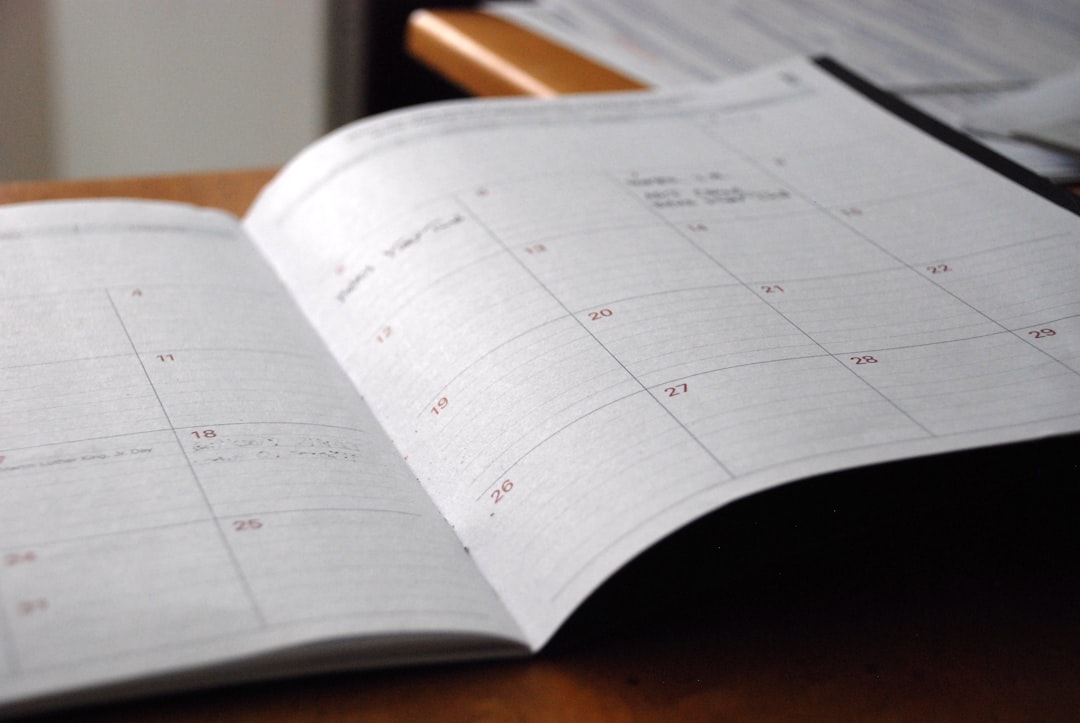
I used to be a slave to my phone. Every buzz and notification was a command I had to obey, pulling me away from my work, my family, and my goals. My days felt fractured and chaotic, a blur of half-finished tasks and mindless scrolling. I knew I needed to change, but the idea of becoming a “productive person” felt like a mountain I couldn’t climb.
If you’ve ever felt that way, you’re not alone. We live in a world designed to distract us. The constant noise makes it hard to focus on what truly matters. But I found a way to fight back. It wasn't a magic pill or a complicated system. It was simple: focus block scheduling. This approach didn't just help me get more done; it was a key part of how I rebuilt my life, moving from bad habits to a place of purpose and intention.
What is Focus Block Scheduling?
Don’t let the fancy name scare you. It’s incredibly simple. You just decide what you’re going to do and when you’re going to do it. You block out specific chunks of time in your calendar for one single task. No multitasking. No distractions.
During that block, you give your full attention to that one thing. Whether it’s writing a report, making sales calls, or even just reading a book without interruption, you create a protected space for deep focus. It’s about being the boss of your time instead of letting your time boss you around.
15 Focus Block Methods to Reclaim Your Day
Getting started is the hardest part. To help you, here are 15 different methods you can try. You don’t need to do all of them. Just pick one or two that feel right for you and give them a shot.
-
The Timer Method. This is a classic. Set a timer for a short period, like 25 or 45 minutes. Work on one task until the timer goes off, then take a short 5-minute break. This makes big projects feel less intimidating.
-
Task Batching. Group similar small tasks together into one block. Instead of answering emails as they come in all day, create a 30-minute “email block.” Do the same for phone calls, running errands, or paying bills. It’s much more efficient.
-
Deep Work Blocks. This was a game-changer for me. When I was trying to break my gaming addiction, I realized I was trading hours of my life for digital noise. I replaced those hours with two-hour deep work blocks focused on building this website. It was hard at first, but it taught me that dedicated focus is more powerful than endless grinding. Block out 2–4 hours for your most important, brain-intensive work.
-
The Most Important Task (MIT) First. Before you even look at your email, decide on the one thing that will make the biggest impact on your day. Block out the first hour or two of your workday to get it done. The rest of the day feels like a victory lap.
-
The "Rule of Three". Sometimes a single MIT feels like too much pressure. Instead, pick your top three priorities for the day. Assign a focus block to each one. Anything else you get done is a bonus.
-
Energy-Based Scheduling. Pay attention to your body’s natural rhythms. Are you a morning person? Schedule your toughest tasks then. Do you get a burst of energy after lunch? Use that time for creative work. Schedule low-energy tasks like tidying up for when you feel a slump.
-
The "Do Not Disturb" Pact. Your schedule only works if you protect it. Put your phone in another room. Close unnecessary tabs on your computer. Let your family or coworkers know you’re in a focus block and can’t be disturbed unless it’s an emergency.
-
Create a Focus Zone. Your environment matters. Designate a specific chair, desk, or corner of a room as your focus zone. When you’re there, you work. When you’re not, you don’t. This trains your brain to switch into focus mode automatically.
-
The Weekly Planning Block. Take 30 minutes on Sunday evening or Monday morning to look at the week ahead. Plan out your most important focus blocks for the entire week. This gives you a clear roadmap and reduces daily decision fatigue.
-
The Buffer Block. Life happens. Meetings run long and tasks take more time than you thought. Add 15–30 minute buffer blocks between your main tasks. This gives you breathing room so one delay doesn’t derail your entire day.
-
The "Flexi-Block". This is a scheduled block of time that you can move around as needed. It's reserved for an important task, but you give yourself permission to shift it to a different time if something urgent comes up.
-
The End-of-Day Shutdown. This is crucial. At the end of your workday, take 15 minutes to review what you accomplished. Clear your desk and, most importantly, make a quick plan for tomorrow’s first focus block. This lets you mentally check out from work and be present in the evening.
-
A Block for Your Faith. My relationship with God is the foundation of my life. I schedule a block of time each morning for prayer and reading Scripture. It’s non-negotiable. This centers my day and reminds me of my greater purpose, making all my other work feel more meaningful.
-
The "Learning" Block. To grow, you need to learn. Schedule a block of time each week just for learning a new skill, reading an industry book, or taking an online course. This is an investment in your future.
-
The Review and Adjust Block. Once a week, take a look at your schedule. What worked? What didn’t? Be honest with yourself. Maybe your deep work blocks were too long, or you didn’t schedule enough break time. Make small adjustments for the following week.
It's a Journey, Not a Destination
Look, my schedule isn't always perfect. Some days I get thrown off course, and that’s okay. The goal isn’t a flawless calendar; it’s progress. It’s about taking back control one block at a time.
This isn't just about getting more done. It’s about creating space for the things that truly matter—your work, your health, your family, and your faith. It’s about living a life of intention, not a life of reaction. It's about honoring the time you've been given.
So, here is my question for you: What’s one small block of time you can protect for yourself tomorrow? Maybe it’s 20 minutes to read without your phone nearby, or 45 minutes to finally start that project you’ve been putting off.
Just pick one. Start there. You might be surprised at what you can build, one block at a time.





